#zebra finch piece
Text
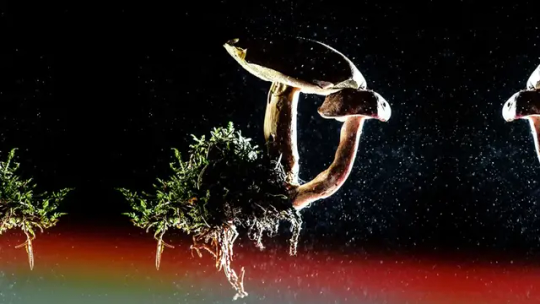
Queering the Wild by Micha Rahder (2019) [final]
Queer Intimacy in Non-Human Animals
The author introduces several examples of ‘queerness’ across the animal kingdom—the ‘birds and the bees’, --a lot about birds since we have a lot of research on them. The study on zebra finches reminded me of the concept of ‘naturecultures’; they choose their mates and often do not stray, same-sex or otherwise and so this supports the idea that there is more to ‘bird life than breeding and that the social aspects of bonding might be just as important’ (02).
“The idea that sexual activity might be about more than just making babies is hard for people who were raised in contemporary U.S. American culture in particular, with its focus on abstinence-only sex ed and heavy legislation of uteruses and the people who have them” (02) but finches, bonobos, dolphins or ‘female fish that prefer males that have had sex with other males, all chip away at that anthropocentric frame’ (02).
“Because scientists carry their cultural biases into their work, most research approaches these kinds of queer traits and behaviors as problems to be solved” (02). Heteronormativity has made scientists ‘run in circles’ trying to explain why such ‘maladaptive’, ‘perverted’ traits appear throughout the natural world such as nutritional deficiencies, the stress of captivity, that they’re just ‘dumb’ and can’t tell the difference, it’s a ‘misfire’ attempt at heterosexuality, or they’re just ‘practicing’.
“Evolutionary biologists need to think about same-sex sexual behavior in non-human animals as more than just a problem to be solved” and “same sex sexual behavior is both a trait that is potentially shaped by selection and a force that shapes selection on other traits” or they should “consider how same-sex sexual activities shape ongoing evolutionary processes” (03).

Extending Our Chosen Family
Evolution has no “direction or purpose” and humans are not “the representation of the ultimate expression of life on earth” (03). If we look at microbiology, we can see true diversity. “Only recently have scientists started to pay attention to how much [microbes exchanging DNA] might be driving evolution” (03). Fungi are also an incredible example of sexual diversity; with one species alone having more than 23,000 documented mating types (sexes) and individuals can physically ‘merge or separate in different environmental contexts’ making it difficult to differentiate them.
‘Symbiopoesis’ or “how organisms can be intimately involved in each other’s development” (squid and light emitting bacteria, bees and pollination, acacia trees and ants, wasps and figs).(03) Again this reminds me of the Lakota concept of Mitakuye Oyasin—we are all related, all my relatives.
Competition//Cooperation is another binary that queer ecology can challenge.
“Queering nature means learning about our connectedness with all the living earth. Here, the classic queer recognition of chosen family extends beyond humans, recognizing our kinship and interdependence with our companion animals, the foods we eat, our microbes and others. It means taking pleasure in those connections, learning to recognize pleasure in others and understanding how our human identities, gender expressions and sexual behaviors are only a small piece of the wide, queer living world” (04).
Queer ecology asks us to be curious about the ‘magnificent overabundance of reality’ (Bagemihl). “Breaking free from the historical biases of science allows us to move forward together with other life on earth, rather than thinking ourselves as separate from or above it. That kind of hierarchical thinking has kept queer and other marginalized communities away from the benefits of being outdoors and has led directly to the tangle of global environmental crises in which we find ourselves now. Learning from non-humans is a great way to undo these legacies” (04).
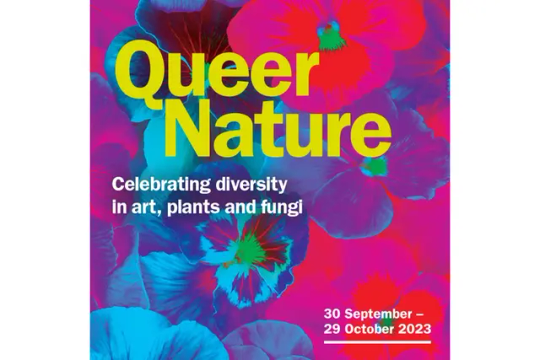
#queering the wild#queer ecology#queer nature#ecofeminism#heteronormativity#queer theory#critical ecology#environmental politics#ecology#queer history#mitakuye oyasin#evolution#naturecultures#Symbiopoesis
37 notes
·
View notes
Text
My zebra finch girl, Vi...!
A short practice piece
messed a few things up tho...

36 notes
·
View notes
Text
A small photo session with some of my skeletons and some skulls (the skulls were not made by me)

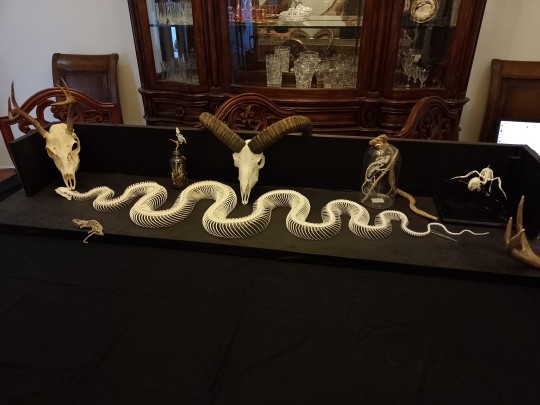
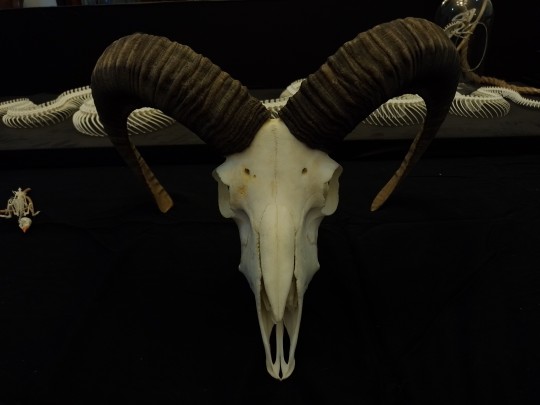
Skulls of white-tailed deer and mouflon, skeletons of zebra finch, quaker parrot, veiled chameleon and reticulated python
And yes, it's the same python skeleton that they broke into pieces, the photos are right after it was repaired, although they lost a neck rib :(
#vulture culture#dead things#dead animal#animal skull#animal bones#bones#animal skeleton#bird skeleton#snake skeleton#bone articulation
21 notes
·
View notes
Audio

Charlie: It’s a wonderful weekday evening. Fiancée, what are you busy with?
MC: Me? I’m watching video clips of a pet bird. I’ve been scrolling through them for the past two hours...
Charlie: What type of a pet bird can captivate you that much?
MC: It’s a zebra finch called “Qiu Qiu” which has been really popular recently. It’s really adorable and looks like soft cotton candy. The comments mentioned that zebra finches love cleanliness and it even cleans itself. It’s really suitable for new pet owners!
Charlie: Hm? Are you thinking of rearing one?
MC: Fine, I’ll admit that I’m a little tempted... but I know that it isn’t the right time for it. If I don’t have sufficient time to keep my pets accompany, it’d be showing a lack of responsibility to their lives.
Charlie: Mm, it looks like my fiancée is pretty clear-headed and hasn’t been muddled by the adorableness of zebra finches.
MC: Of course. After all, I’ve had several interactions with little birds ever since knowing you.
Charlie: That’s right. As a bird expert, I think there’s a need to let everyone know that even though a majority of little birds don't have a high IQ, they feel happy when they’re cared for, and will feel sad when neglected. Before they can keep their owners company, they need their owner’s company too.
MC: Mm, I share the same view. That’s why I’m sometimes really envious of the relationship you have with Sherry.
Charlie: Is it because Sherry is free to visit and leave my house?
MC: That’s not all. You and Sherry are able to communicate with each other. That’s amazing!
Charlie: I understand what you mean. The healthiest relationship between humans and animals shouldn’t be one of caring and being taken cared of. More importantly, they should interact as friends who keep each other company.
MC: Agreed! It’d be great if I could own a little bird and communicate with it without any obstructions someday...
Charlie: Fiancée, you seem to have forgotten something... From a certain perspective, you already have such a relationship.
MC: Are you referring to...
Charlie: That’s right - me. Anything a zebra finch can do, I can do better. Whether it’s going over to your side voluntarily after you’re done with work, or bringing you surprises during holidays, these are my merits. Most importantly, I can communicate with you. Fiancée, is there a healthier and more suitable relationship than what we have?
MC: That’s true, you’re a hundred times more incredible than a zebra finch.
Charlie: So, fiancée, stop thinking about other birds. As your fiancé, I’m still a little selfish. After all, I don’t want another little bird to take up your time.
MC: Hey, Charlie, are you jealous?
Charlie: Yes, and it’s very serious. When I saw that you were thinking of rearing a zebra finch, my heart was about to shatter into pieces. As compensation, why don’t you come over to my place tomorrow night? Sherry was just telling me that she missed you earlier. She even prepared a mysterious present and is keeping its contents a secret from me.
MC: Mm, is that so? In that case, there’s no need to wait till tomorrow. I’m free tonight-
Charlie: I’ll pick you up after work tonight. Before that, you aren’t allowed to think of other birds.
10 notes
·
View notes
Text
I present my radical new phylogenic system that, among other changes, classifies seals as gastropods. The other taxonomists cut me into thousands of pieces as punishment for my terrible sin, but like an ancient god, each one of my pieces transforms into a fucked up new species such as a shrimp with a single massive multinuclear cell as a brain, what appears to be a normal zebra finch but upon further examination is protostomic, and a flowering fern.
0 notes
Note
🌟🌟🌟 !!
@dandelicn For every "🌟" I recieve , I'll share a fact about my muse .

Eileen has a deep admiration for Vincent Van Gogh's work. Not only is her room decorated with sunflowers and copied murals of his famous pieces, but also feels an emotional connection to them.
The jade bracelet she wears was a gift she received from a family friend. It's one of her prized possessions, and never goes anywhere without it.
She use to own a couple zebra finches. While her attachment to them was strong, she wound up having to rehome them when her family moved as their current residence didn't have enough room.
1 note
·
View note
Text
Eating healthy and sharing my food with my Birds
I see a lot of people eating a lot of fast food and candy. Honestly, I did that too. But then I just stopped. I avoid sugar at all costs, and fast-food even more.
I've currently got 10 Birds, that live in my room. 6 Zebra Finches, 2 Budgies and 4 Cockatiels. If you know anything about birds, then you are aware that their diet is quite expensive. Seeds are the bird version of fast food and sugar.
Since they don't eat meat and I'm a vegetarian, I can basically share my food with them (sometimes). I often eat rice (cooked without salt) and so they also get a bowl of rice. Vegetables? They get a piece too.
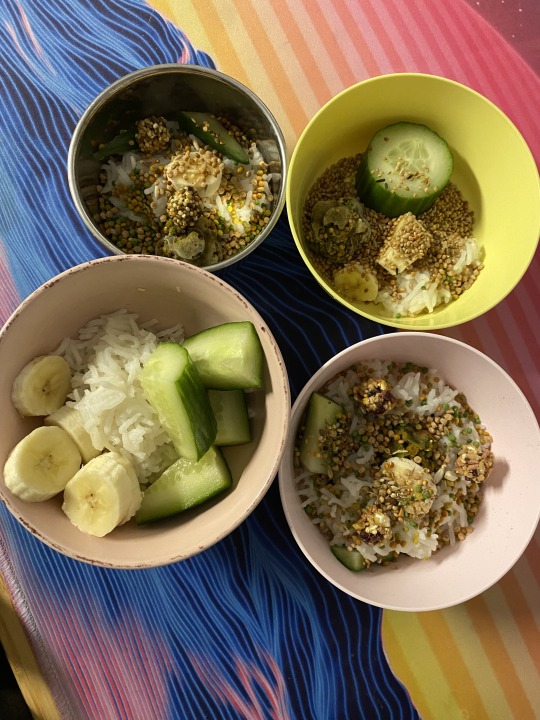
Being aware of what is toxic to them, is a top tire knowledge to always keep in the back of my head. Avocado? Toxic, not going to eat it. Chocolate? Toxic, good it's candy anyways.
How to keep eating a healthy diet? Avoiding sugar?
Well, I track calories, sugar, etc with an app (MyFitnessPal) that gives me aware of what I'm eating and if I get all the minerals and vitamins I need.
Also going day by day is very important, especially for people who really have to fight for that healthy diet. First one day, then two days,...
If you fail, damn too bad, let's break that record of x-days and make it x+1 days.
And honestly, I'm at the point where I don't miss sugar or fast food. It's way too sweet now. Looking at it even makes me feel sick sometimes.
Yes, I do eat a piece of cake or German chocolate bread ("Schokobrötchen" in German, no clue what it's called in English) every once in a while.
But as I said, it doesn't have the same effect as it used to have. I don't want more for days/weeks after eating one of those.
Also a pro tip: There are so many things that can be made out of just rice and vegetables, perfect for fighting that hunger.
Also, proteins are important!
0 notes
Text
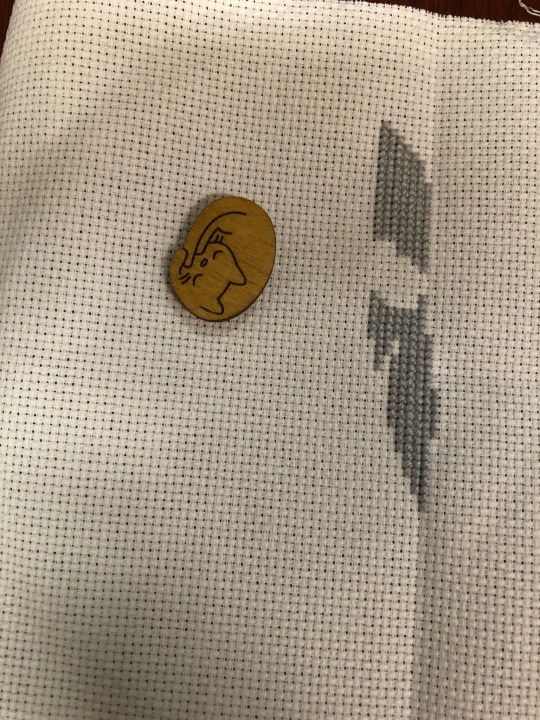


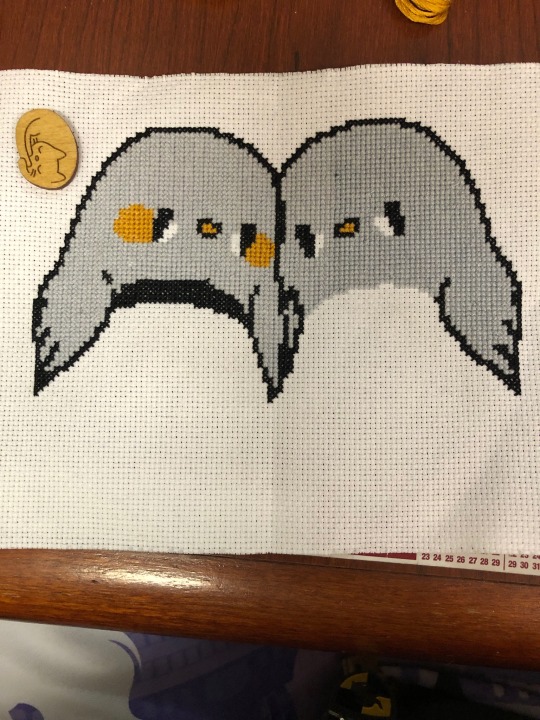


Progress on a zebra finch piece for my aunt's birthday, started on May 4, 2020 and finished today, May 13, 2020.
#miles does cross stitch#cross stitch#zebra finch piece#may projects#project masterpost#2020 projects#finished projects
0 notes
Photo

! Zebra Finch Ft. Rain Poncho !
#illustration#character design#zebra finch#bird#umbrella#digging out old WIPs and finally finishing them 2334663457 years later is oddly calming#Gotta love those patchwork birds#dang enchanted pieces of popcorn
44 notes
·
View notes
Text
Project to read genomes of all 70,000 vertebrate species reports first discoveries

- By Howard Hughes Medical Institute -
It’s one of the most audacious projects in biology today – reading the entire genome of every bird, mammal, lizard, fish, and all other creatures with backbones.
And now comes the first major payoff from the Vertebrate Genomes Project (VGP): near complete, high-quality genomes of 25 species, Howard Hughes Medical Institute (HHMI) Investigator Erich Jarvis with scores of coauthors report April 28, 2021, in the journal Nature.
These species include the greater horseshoe bat, the Canada lynx, the platypus, and the kākāpō parrot – one of the first high-quality genomes of an endangered vertebrate species.
The paper also lays out the technical advances that let scientists achieve a new level of accuracy and completeness and paves the way for decoding the genomes of the roughly 70,000 vertebrate species living today, says HHMI Investigator and study coauthor David Haussler, a computational geneticist at the University of California, Santa Cruz (UCSC). “We will get a spectacular picture of how nature actually filled out all the ecosystems with this unbelievably diverse array of animals.”
Together with a slew of accompanying papers, the work is beginning to deliver on that promise. The project team has discovered previously unknown chromosomes in the zebra finch genome, for example, and a surprise finding about genetic differences between marmoset and human brains. The new research also offers hope for saving the kākāpō and the endangered vaquita dolphin from extinction.
“These 25 genomes represent a key milestone,” explains Jarvis, VGP chair and a neurogeneticist at The Rockefeller University. “We are learning a lot more than we expected,” he says. “The work is a proof of principle for what’s to come.”
From 10K to 70K
The VGP milestone has been years in the making. The project’s origins date back to the late-2000s, when Haussler, geneticist Stephen O’Brien, and Oliver Ryder, director of conservation genetics at the San Diego Zoo, figured it was time to think big.
Instead of sequencing just a few species, such as humans and model organisms like fruit flies, why not read the complete genomes of ten thousand animals in a bold “Genome 10K” effort? At the time, though, the price tag was hundreds of millions of dollars, and the plan never really got off the ground. “Everyone knew it was a great idea, but nobody wanted to pay for it,” recalls HHMI Investigator and HHMI Professor Beth Shapiro, an evolutionary biologist at UCSC and a coauthor of the Nature paper.
Plus, scientists’ early efforts at spelling out, or “sequencing,” all the DNA letters in an animal’s genome were riddled with errors. In the original approach used to complete the first rough human genome in 2003, scientists chopped up DNA into short pieces a few hundred letters long and read those letters. Then came the fiendishly difficult job of assembling the fragments in the right order. The methods weren’t up to task, resulting in misassemblies, major gaps, and other mistakes. Often it wasn’t even possible to map genes to individual chromosomes.
The introduction of new sequencing technologies with shorter reads helped make the idea of reading thousands of genomes possible. These rapidly developing technologies slashed costs but also reduced quality in genome assembly structure. Then in 2015, Haussler and colleagues brought in Jarvis, a pioneer in deciphering the intricate neural circuits that let birds trill new tunes after listening to others’ songs. Jarvis had already shown a knack for managing big, complex efforts. In 2014, he and more than a hundred colleagues sequenced the genomes of 48 bird species, which turned up new genes involved in vocal learning. “David and others asked me to take on leadership of the Genome 10K project,” Jarvis recalls. “They felt I had the personality for it.” Or, as Shapiro puts it: “Erich is a very pushy leader, in a nice way. What he wants to happen, he will make happen.”
Jarvis expanded and rebranded the Genome 10K idea to include all vertebrate genomes. He also helped launch a new sequencing center at Rockefeller that, together with one at the Max Planck Institute in Germany led by former HHMI Janelia Research Campus Group Leader Gene Myers, and another at the Sanger Institute in the UK led by Richard Durbin and Mark Blaxter, is currently producing most of the VGP genome data. He asked Adam Phillippy, a leading genome expert at the National Human Genome Research Institute (NHGRI), to chair the VGP assembly team. Then, he found about 60 top scientists willing to use their own grant money to pay for the sequencing costs at the centers to tackle the genomes they were most interested in. The team also negotiated with the Māori in New Zealand and officials in Mexico to get kākāpō and vaquita samples in “a beautiful example of international collaboration,” says Sadye Paez, program director of the VGP at Rockefeller.
Opening doors
The massive team of researchers pulled off a series of technological advances. The new sequencing machines let them read DNA chunks 10,000 or more letters long, instead of just a few hundred. The researchers also devised clever methods for assembling those segments into individual chromosomes. They have been able to tease out which genes were inherited from the mother and the father. This solves a particularly thorny problem known as “false duplication,” where scientists mistakenly label maternal and paternal copies of the same gene as two separate sister genes.
“I think this work opens a set of really important doors, since the technical aspects of assembly have been the bottleneck for sequencing genomes in the past,” says Jenny Tung, a geneticist at Duke University, who was not directly involved with the research. Having high-quality sequencing data “will transform the types of question that people can ask,” she says.
The team’s improved accuracy shows that previous genome sequences are seriously incomplete. In the zebra finch, for example, the team found eight new chromosomes and about 900 genes that had been thought to be missing. Previously unknown chromosomes popped up in the platypus as well, as members of the team reported online in Nature earlier this year. The researchers also plowed through, and correctly assembled, long stretches of repetitive DNA, much of which contain just two of the four genetic letters. Some scientists considered these stretches to be non-functional “junk” or “dark matter.” Wrong. Many of the repeats occur in regions of the genome that code for proteins, says Jarvis, suggesting that the DNA plays a surprisingly crucial role in turning genes on or off.
That’s just the start of what the Nature paper envisions as “a new era of discovery across the life sciences.” With every new genome sequence, Jarvis and his collaborators uncover new – and often unexpected – findings. Jarvis’s lab, for example, has finally nabbed the regulatory region of a key gene parrots and songbirds need to learn tunes; next, his team will try to figure out how it works. The marmoset genome yielded several surprises. While marmoset and human brain genes are largely conserved, the marmoset has several genes for human pathogenic amino acids. That highlights the need to consider genomic context when developing animal models, the team reports in a companion paper in Nature. And in findings published last year in Nature, a group led by Professor Emma Teeling at University College Dublin in Ireland discovered that some bats have lost immunity-related genes, which could help explain their ability to tolerate viruses like SARS-CoV-2, which causes COVID-19.
The new information also may boost efforts to save rare species. “It is a critically important moral duty to help species that are going extinct,” Jarvis says. That’s why the team collected samples from a kākāpō named Jane, part of a captive breeding program that has brought the parrot back from the brink of extinction. In a paper published in the new journal Cell Genomics, of the Cell family of journals, Nicolas Dussex at the University of Otago and colleagues described their studies of Jane’s genes along with other individuals. The work revealed that the last surviving kākāpō population, isolated on an island off New Zealand for the last 10,000 years, has somehow purged deleterious mutations, despite the species’ low genetic diversity. A similar finding was seen for the vaquita, with an estimated 10-20 individuals left on the planet, in a study published in Molecular Ecology Resources, led by Phil Morin at the National Oceanic and Atmospheric Administration Fisheries in La Jolla, California. “That means there is hope for conserving the species,” Jarvis concludes.
A clear path
The VGP is now focused on sequencing even more species. The project team’s next goal is finishing 260 genomes, representing all vertebrate orders, and then snaring enough funding to tackle thousands more, representing all families. That work won’t be easy, and it will inevitably bring new technical and logistical challenges, Tung says. Once hundreds or even thousands of animals readily found in zoos or labs have been sequenced, scientists may face ethical hurdles obtaining samples from other species, especially when the animals are rare or endangered.
But with the new paper, the path ahead looks clearer than it has in years. The VGP model is even inspiring other large sequencing efforts, including the Earth Biogenome Project, which aims to decode the genomes of all eukaryotic species within 10 years. Perhaps for the first time, it seems possible to realize the dream that Haussler and many others share of reading every letter of every organism’s genome. Darwin saw the enormous diversity of life on Earth as “endless forms most beautiful,” Haussler observes. “Now, we have an incredible opportunity to see how those forms came about.”
--
Source: Howard Hughes Medical Institute
Full study: “Towards complete and error-free genome assemblies of all vertebrate species”, Nature.
https://doi.org/10.1038/s41586-021-03451-0
Read Also
Study: Genetic diversity of African leopards twice as high as lions’
#animals#zoology#genomics#dna#vertebrates#genome sequencing#biology#genetics#Vertebrate Genome Project#vgp#biodiversity
2 notes
·
View notes
Photo

Oh boy and here come the stress of online classes for the first time
Anyways have this, colors stolen from a zebra finch
I know I could have done better on this piece but eh,,
18 notes
·
View notes
Text
Tagged By: @hipster-cringe-queen (I guess we could actually talk to each other rather than just tagging each other in shit but 🤷🏽♂️)
Rules: Simply answer the following 21 questions and then tag 21 (or however many) people you’d love to get to know more!
Warning- I recently did a shorter version of this post
Name/Nickname: Devin, so Dev by most, and Lemon by my mum
Zodiac Sign: Cancer sun, Aquarius moon, Taurus rising
Height: about 5’3”
Hogwarts House: Slitherin I think? I’ve never really been into HP
Last Thing I Googled: what tf “soz” meant (it’s basically slang for sorry)
Favorite Musician: I don’t… have one? Brandon Urie (P!atD), Lizzy Hale (Halestorm), Nothing But Thieves, Ryan O’Neal (Sleeping At Last), LP, Florence + The Machine, the list goes on
Last Song I Listened To: I Don’t Mind It, by Screaming Females
Song Stuck in My Head: I’ll say it, the Grounders Anthem from The 100, Take a Life With Me
Followers: 358, w a sad amount as porn bots
Following: 538, though I might do an overhaul soon of new blogs for more variety
Amount of Sleep: anywhere from 5-9 hours
Lucky Number(s): 4, 16, 42
What I’m Wearing: right now? Umm, undies and socks, I have yet to get up for the day 😬
Dream Job: being a caretaker for one of those old castles in Italy that they’ll give you for free as long as you take care of them, so I could renovate it and be like a shepherd or freelance writer or something
Dream Trip: a cabin in the mountains where I could backpack/hike if I wanted or just sit outside and read/write
Favorite Food: pussy- I mean eloté
Languages: English, a bit of rusty Spanish, and I’m very new to Norwegian
Instruments: I used to know how to play the piano and guitar but I haven’t in quite a while now
Favorite Song(s): Secrets by Mary Lambert, No Children by The Mountain Goats, I Like It Heavy by Halestorm, Letterbomb by Green Day (the musical version), Miracle, Russian, Midnight, and Lone Digger by Caravan Palace, Bitchin’ in the Kitchen from Shock Treatment, Mattress by Leland, Pussy is God by King Princess
Random Facts: I copiloted a plane before I drove a car, I spent two weeks in jail, I own zebra finches (well, I own one and my brother (who lives with me) owns six), I’m divorced, I’m the third of ten kids
Aesthetic: Bitch, tf if I know, but I’ve had someone tell me a motorcycle would finish my look, and someone else tell me they didn’t realize I wore normal prescription glasses and thought I always wore sunglasses, and the one piece of art I have in my room in a floral tapestry that says “Shit Could Be Worse”, though I have a few plants in the corner (my gay flag is in the main room). I wear, do, listen to what I like, fight me about it
Tagging: @ur-the-puppy @elizataylorsboo @invalid-delusion @helen-everythingqueer @arianadoesherbest @snapback-stargazer @taylorxdebnam @3dot @1oftheseasons @commanderbottomshearteyes @supergeekgirl05 @olypit @globallgbtq @wildflower-1995 @armc2002 @broody-ish @thegayaussieavocado @whatthefuckdoesthatevenmeanbooth @wishingitwasallreal @faberryacheleluver @apethecrow
10 notes
·
View notes
Link
After some 20 years of theorizing, a scientist is publicly renouncing the “beautiful hypothesis” that male birds’ sexy songs could indicate the quality of their brains.
Behavioral ecologist Steve Nowicki of Duke University called birdsong “unreliable” as a clue for choosy females seeking a smart mate, in a paper published in the March 2018 Animal Behaviour. He will also soon publish another critique based on male songbirds that failed to score consistently on learning tests. And in what he calls a “public service announcement,” Nowicki summarized the negative results of those tests on January 4 at the annual meeting of the Society for Integrative and Comparative Biology in Tampa, Fla.
“This was a beautiful hypothesis that got beaten up by data,” he says.
Knowing that something about male singing matters to a female songbird, Nowicki and other researchers once proposed that the quality of singing might indicate a bird’s brainpower. The idea was that, because songbirds need to learn their songs, females could select males with the best brain development by selecting those singing the most precisely copied songs. A brainier male might be better at hunting baby food or spotting predators, thus helping more chicks to survive. Or braininess might signal an indirect benefit, such as contributing good genes to chicks.
The first evidence for the notion that birdsong indicates bird smarts came from Neeltje Boogert at the University of Exeter in England, whose research suggested female zebra finches preferred smarter males with more complex songs. But subsequent studies have found evidence both supporting and contradicting the theory. To try to settle the matter, Nowicki and collaborators hand-raised 19 male song sparrows in the lab, controlling which songs the little birds heard as examples to copy so that it was clear how well each youngster learned each song.
To judge the birds’ mental capacity separately from their song learning, the researchers administered five learning challenges, such as learning which colored container lids to flip open for food. We “found a hodgepodge” of results, Nowicki says. A bird might have done well on some tests and flubbed others, and the puzzle solving results still didn’t match the bird’s song learning ability.
“Maybe they weren't cognitively good at stuff because they lived their life in a cage,” Nowicki wondered. To resolve that question, he and colleagues turned to wild swamp sparrows in a Pennsylvania marsh.
It’s trickier to judge the precision of birds’ mimicry in the wild, where youngsters hear multiple adult songs to copy. So a coauthor had a computer sort recordings from the marsh into a few “typical” song types. The closer a newly musical sparrow’s song came to one of those forms, the higher the researchers ranked the bird’s learning. Researchers also put these new singers through the cognitive tests. But again, the results were a hodgepodge, Nowicki says, finally beating his old hypothesis about birdsong to pieces.
Songbirds may not have a general bird “IQ” in the sense of how people use the term, says Rindy Anderson of Florida Atlantic University in Davie, who has worked with Nowicki. Instead, bird intelligence may be more modular, she says, with the birds good at certain learning tasks, but lousy at others.
Even if male songbirds don’t betray their smarts through song, some scientists are testing a different group of birds, parrots, to see if female prefer smarter mates. The colorful birds may be the closest living relatives to songbirds on the genealogical tree.
Among flirting budgerigars, a kind of parrot, females preferred males that performed food-finding tricksthat they had learned, researchers in China and the Netherlands reported in the January 11 Science. A parrot researcher who wasn’t involved in that study, Tim Wright at New Mexico State University in Las Cruces, is finishing up a paper on different way of testing whether budgerigars’ sex appeal is tied to their smarts. In spite of Nowicki’s warnings about unreliable song, Wright isn’t ready to give up on the basic notion that a male’s smarts matter to his mate.
29 notes
·
View notes
Text
Album Art Contest Winners
Here they are, the winners of the Album Art contest! ^O^ Again, sorry it took way too long, longer than expected, but it’s done. u.u Amazing work with your designs, you’ll be receiving a message from @tollingwing to talk about your prizes soon. ( ˙꒳˙ )
Grand Prize Winner

Hocus Pocus by @chocolate-paws
Where do we even begin with this? Well, you were late; the very last entry when we were nearly closed for judging. What is it with late comers always having the biggest surprise?
All joking aside, we’ll start with the playlist: Not only does the look of this design speak for all the songs you provided, it feels like them. The innocence (and loneliness) behind the music choices matches right up to this design and it cannot be expressed enough how well you’ve pulled off that concept. The arrangements of the toys following Aika is creative and flat out adorable and having them line up in a height gradient is a plus.
The handwritten (at least, we assume it’s handwritten?) text is nice and clear and child-like, fitting right in with the whole theme. Only complaint for words is the tiny ‘Aika’ in the bottom right corner that could be easily missed. The flower frame is a nice, soft touch that is a great representation of ‘child-like vision’.
Overall this design nails the theme it was going for.
Your prizes are:
🎵 Song video of their Siren with any song of their choice. (discuss with prize handlers what kind of theme/mood it will have)
🎵 Half-body illustration of their Siren (samples here) .jpg and transparent .png will be provided.
🎵 (For SL Discord Server, optional) The title/role “Wings of Fame” with name colour of their choice.
Congratulations, you’ve earned it. Looking forward to see how the video will turn out. :)
Digital Category

STARS (Digital) by @islandgirl5311
First of all, kudos to you for using one of Van Gogh’s works to portray this. Your quote of “the stars you see are fake” is a nice representation of how his mind worked. We can’t say for sure if there is a deeper meaning behind the choice of that painting when it comes to Coda personally, but we can definitely feel it.
Your choice of font (and having the text below ‘STARS’ be smaller in a different style) fits right in with the background and your editing of making them seem loud and clear is superb. The messy look of the entire piece is amazingly controlled (it could have ended up a pure mess and just a crowded design of too many things in one picture, but you pulled it off neatly)
Your prizes are:
🎵 Half-body, greyscale (minimal colours for highlights) illustration of their Siren.
🎵 (For SL Discord Server, optional) The title/role “Modern-Age Siren“ with name colour of their choice.
Congratulations again, you’re a rock star.
Traditional Category

Lunar Angel by @juju-loxar
Here’s the thing about you juju: you drew 2 entries. And while yes, one was for your friend’s entry, by doing that you showed us consistency- a potential to do an ‘album art series’. This was refreshing to see because most album art is always one different style to another.
Having a series of album designs done in a consistent style is one visual way to make a music artist more recognizable and that idea is very tempting. People will look at a CD cover and go ‘Oh look it’s ___’s album!’ because they know the look, they know the musician’s aesthetics and style choices just by looking at their CD covers. They know that this musician would only hire one particular artist to do their album art, and because of that, they have an identity.
Your prizes are:
🎵 Sketched, half-body illustration of their Siren.
🎵 (For SL Discord Server, optional) The title/role “Old-fashioned Siren” with name colour of their choice.
Well done in delivering that concept, you earned this place.
Bonus Prize
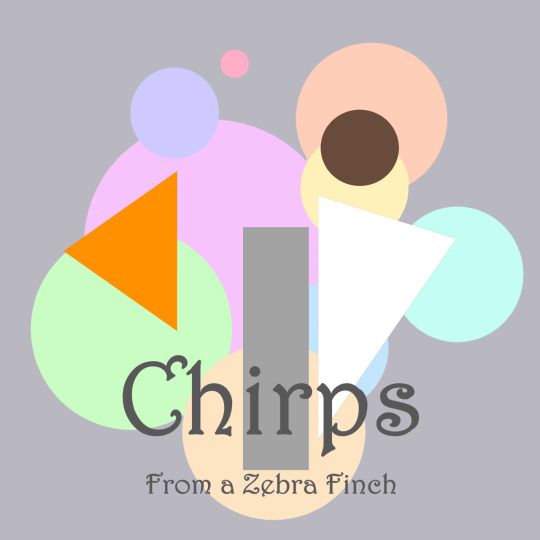
Chirps (From a Zebra Finch) by @mekito
After some discussion, it’s decided that we’re giving a bonus prize just for you.
Your prize will be:
🎵 Sketched, half-body illustration of their Siren.
🎵 (For SL Discord Server, optional) The title/role “Contemporary Siren” with name colour of their choice.
Congratulations once more on this amazing design.
27 notes
·
View notes
Text
June 7-10 Tackling the Tanami!
[I’ve yet to write up about our last week in Alice. Hopefully I’ll catch up with that along the road - there’s so much to process!]

It was a bucketlist kind of thing for us so we approached the journey with excitement - tinged with a wee bit of apprehension. We’re never sure what to expect which is one of the dilemmas of travelling in the outback - conflicting road condition reports etc. Like film reviews, it's all a matter of perspective, experience, expectation, and .... je ne sais quio.

Vast! Along most of the Track we could see partially wrap-around mountain ranges - and they say the interior is flat!
The Tanami Track, the track through the Tanami desert, is nigh on 1100 kms and mostly unsealed. It’s one of a handful of iconic routes in Australia which was on our list to travel. We’d been to Tilmouth Well (on the Napperby Creek) plus to New Haven, a bird sanctuary 10 years ago and expected the dirt to start after Tilmouth Well but the bitumen had been extended to about Yuendumu and there were road crews working to take the bitumen further. Won’t be long and the whole thing will be ‘sealed’.
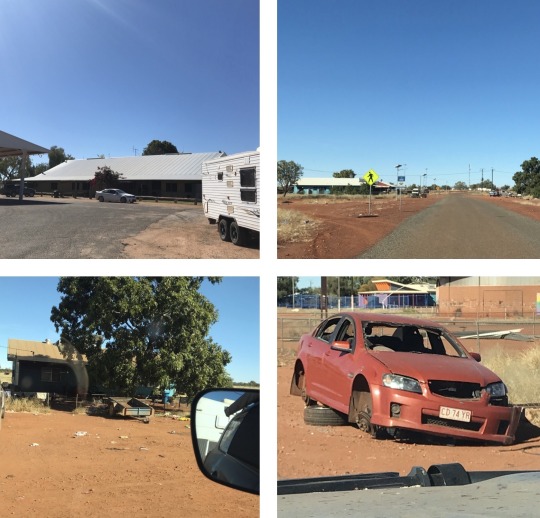

Tilmouth Well (top left) is simply a roadhouse but Yuendumu is a ‘settlement’ (once a mission). It’s rather run down but the art gallery is supposed to be special, we didn’t stop. The bitumen is slowly but surely creeped NW-wards.
Fascinating to watch the change in vegetation as we travelled further NE from the Centre. Mulga scrub, waving spinifex plains, acacia, eucalypts, tons of flowers and even fungi along the road (I’ll post plants separately). There is a number of humongous cattle stations out there and very remote aboriginal communities but the most you see are signs and occasional wandering cattle. We were intrigued by tracks shooting off right and left almost always to remote aboriginal communities. Would have loved to visit but they require permits and some 100-200 kms were simply too far.

By accident we entered an aboriginal camp at Chilla Well; we were looking for an historic water well. We felt most uncomfortable as if we were sticky-nosing so turned around (doing some damage to our rig!) and went on our way.

It’s a very long road 1100km and you think fuel. Well ‘they say’ that fuel is available at certain spots along the track but those spots were closed (to visitors) with signs saying no fuel. We did venture into Yuendumu with the idea of topping up but there was no way we could have got close to the bowser. Fortunately with the little top up at Tilmouth Well, we had plenty to get us through. We’d had a long range tank installed last year (with this trip in mind) so we carry 290L plus extra snifter in jerry cans. Even towing the van on shocker roads we had enough.

From the sublime to the ridiculous. We saw some massive rigs with mammoth mining equipment in board (there are a number of mines in the area). This guy had to retrace his wheel tracks to get his trailer fixed poor thing.
We saw swarms of budgies and zebra finches around a water hole. And then we were in anthill country. Some of the ‘hills’ were huge. From time to time we stopped to check out our rig or a bird or bush but mostly we kept trucking right ahead.

Each night we simply pulled up roadside and gingerly opened the caravan door to assess our wounds, clean up any 'debris de tour', and then enjoyed glorious sunsets and nights under the stars. We took a side trip in to see Wolfe Creek Crater. It was wonderful but I’ll post pix of that later.
We arrived at Halls Creek after almost 4 days all in one slightly battered piece - and collapsed with a huge sigh. We did it! Rather rough in places so our mobile cubby has taken a bit of a beating but nothing that can’t be repaired. Given her age, the distance she’s followed us and the remote places we have taken her, she has been an absolute trouper. We have to admit that she is coming to retirement age, but there are still roads to travel and many rivers to cross before that day. Over 130,000 Km is not bad for a non-purpose built van, i.e., she’s not off-road or anything fancy like that but she’s a comfortable little haven.
0 notes
Text
The Tanami Track
Sunday, 6 June
(Wow! It is two weeks since I posted anything so I will try to catch up, albeit slowly.)
We had quite a few little jobs we wanted to do in Alice before setting sail for the Tanami and that took a couple of hours – testing and topping up our water tanks, a bit of cleaning in the car, reorganising things in the van in case of really bad roads, emptying the loo and disposing of rubbish and recycling, last minute hand washing – and of course, we had to move the van from one site to another because someone else had been allocated our site before we had booked the extra night – more packing up and unpacking, but we didn’t do more than necessary in the hope of making it easier to get on the road tomorrow.
We did a bit more supermarket shopping – just topping up a couple of things – and Heather had knitted a few more beanies so we dropped them off at a mission.
Monday, 7 June
Finally, the Tanami itself!
We said goodbye to Bill and Linda at the caravan park and hit the road at about 10.15. We called in at A-one Autos who had worked the minor miracle on our car a few days ago. I thanked them again and picked up a few business cards because I promised Linda I would get some for when people asked her for a reliable mechanic.
We also purchased 187 litres of diesel – thirsty beast that it is – and finally we were off on the trip we had planned several times before. (It reminded me a little of our attempts at the Darling Run – planned quite a few times before we finally achieved the objective.)
It was all bitumen to Tilmouth Well where we imagined we would stay overnight but it was not yet 1pm so we just topped up with fuel again (40 litres for 187 kilometres) and let some air out of the tyres in anticipation of some pretty rough road ahead. Ten years ago, we had stayed at Tilmouth Well and did a day-trip out to Birdlife Australia’s sanctuary at Newhaven. The first 40 kilometres of that was on the Tanami Road and it was the worst road I had driven at the time with inescapable corrugations 8-10 cm deep all the way. This time, it was good bitumen almost all the way to Yuendumu – they were sealing the last few kilometres as we went through.
Yuendumu was about 80 clicks further up the Tanami Track than we had been before and it seemed something of an achievement to have reached it. Alas, Yuendumu is just a very sad little aboriginal settlement about 3 or 4 clicks off the Track and we just drove in for a look but never got out of the car. There is only one shop and accompanying fuel stop that visitors are allowed to use, but we just drove past and headed back to the ‘highway’. I remember the Yuendumu Mission being talked about at Church when I was young and Mum seemed to mention it quite often, perhaps romanticising it a little – but it is an outstandingly poor, sad, dilapidated place in real life. (And I think that would be the best description of Yuendumu Heights – unfortunately, it seemed to be entirely lowlands.)
From then on, the road was all gravel, much of it heavily corrugated, with only a small percentage being easily trafficable – the driver had to pick his way back and forth across the road for most of the way, looking for the best and smoothest path. Initially, I didn’t think the road was quite as bad as it was last time we set our wheels on it, but Heather reminded me that 2011 was a long time ago and we are now much more experienced in driving goat-tracks than we were – and of course, with the caravan in tow this time, it is almost impossible to compare.
There were quite a number of patches with groups of small birds all along the sides of the road through to Halls Creek. Alas, they often flushed and flew across the road immediately in front of the car and I fear we may have contributed (just a little) to the risk of extinction of mainly Budgerigars (still millions of them around) and Zebra Finches (that almost equal the Budgies in number.)
We camped in a truck lay-by about 40-odd kilometres west of Yuendumu and spent a couple of hours cleaning dust out of everything. The van had been shaken around viciously all day and we picked up a few odd screws and brackets off the floor that we couldn’t identify – at the time. More on the damages later…..!!!
The sunset was spectacular and the stars totally awe-inspiring in a pitch-black sky. A couple of cars passed us very late at night, but otherwise, it seemed as if we had Australia totally to ourselves. If I was a Toyota driver (as I am), I would probably leap up and shout ‘Oh, what a feeling’. I didn’t, but it was a feeling to savour for years.
Tuesday, 8 June
It was very calm and quiet overnight, but a breeze kicked up soon after breakfast and kept the dust flying for two whole days. At times, everything took on a slightly blurred yellowish tint due to the dust in the air.
Not far into the day, we saw a group of about 10 or 12 raptors circling ahead and when we reached them, we saw they were circling a small dam around which were literally many thousands of Budgerigars and Zebra Finches as well as a smaller variety of woodswallows, doves and other birds. The smaller birds were wheeling around in huge clouds then swooping down to grab a quick drink and off again as another thousand took their place – again and again and again. The raptors were mainly Black Kites and Whistling Kites, but we saw a Square-tailed Kite and a Black-Breasted Buzzard – and a Peregrine Falcon swooped in a few times just before we left. We watched for half an hour or more and most of the raptors left the immediate area although we could see them perched in trees half a kilometre away.
One Black Kite stayed in the tree overlooking the dam and dozens of smaller birds shared the same tree, obviously aware that the Kite was unable to catch them whilst perched. Interestingly, although the raptors made dozens of passes through thick clouds of birds, we didn’t see a single strike – there may have been a few, but we never saw them and the raptors just kept up their diving and swooping for quite some time before they tired of it.
The little birds perched so close to the Black Kite had me thinking of other situations where little birds seem to have the upper hand. Obviously, they don’t always come out on top or the raptors might starve, but we have seen scores of examples of birds a tenth the size of ravens or raptors harassing and chasing much bigger birds away from their nests. I am sure that if the raptor turned on the smaller bird, it would turn the tables quickly enough, but it never seems to happen and even very small birds will harass much larger birds again and again for quite some time until the larger bird gives up and flies away. Just another little quirk of nature!
Later in the morning we stopped for a couple of minutes to chat with a guy on a push-bike heading back to Yuendumu. He had a small low trailer behind his bike and said he was actually heading somewhere south (at least 200 kilometres to the nearest settlement as far as we could see) but there was a problem with his trailer and he had to ride back to Yuendumu to get it fixed – and he was still well over 100 kilometres out. That is really doing things the hard way! I watched him when he was riding – he was going very slowly (no wonder!) and every corrugation was a mini-ride uphill followed by a downhill one with the front, back and trailer wheels all out of synch – really hard going!!!
We also passed and re-passed two giant trucks 3 or 4 times when we detoured off the road for lunch or to look at things. They had huge pieces of equipment on them and were travelling at a comfortable walking pace – 6 or 7 kph at a guess. We think they were both driverless although one of them had a guy in it who waved at Heather when she took a photo. Probably the Union Rules require a driver to be in all driverless trucks even if he was sleeping or reading most of the time.
We called into a place called Chilla Well, another very small sad aboriginal settlement 3 clicks off the main road, with just a ramshackle house, a few tumble-down sheds and at least 24 tents of various sizes. We only saw 2 rather unwelcoming guys in a car that came up to us to see what we were doing. I think we may have been on aboriginal land without a permit, but there had been no signage anywhere that we needed one. We were trying to figure out a problem at the time. I had to do a 3-point turn to get out of the place and as I turned, there was a huge bang and a light came on in the dashboard. We were reading the manual to see what it meant and in the absence of anything useful, I used our sat-phone to ring Toyota in Melbourne to see if it was still safe to drive. It seems that something untoward had happened and we lost all our traction control features – but it was still safe to drive with some extra care – great news, given that we were still 700 kilometres from Halls Creek. I did notice a very minor change in handling the rig on the rougher patches of road from then on, but it may not have arisen from the loss of our traction control capability. A couple of days later, I noticed that one of the big brackets attaching our sway-bars to the drawbar was seriously bent and that the right-hand sway-bar was completely missing. I suspect that my 3-point turn at Chilla Well may have almost jack-knifed the rig and bent the bracket, loosening or disconnecting the sway-bar – it happened a few years ago when the Port Hedland Caravan Park put us on a small trailer site and it was virtually impossible to manoeuvre onto it.
We stopped a couple of times to photograph The Granites – strange rocky outcrops popping up almost grotesquely out of a fairly flat landscape. They were quite strange but not all that extensive, at least not close to the road. (In retrospect, I think they were a lot more extensive than I thought at the time. We saw very similar formations further west and again just north of there as we travelled to Halls Creek and back to Katherine a few days later.)
Another feature of the trip was the termite mounds. There were a few small ones around Alice, but as we went further west, they became much more prevalent and at times, I reckon we could have counted a thousand of them without moving the car. Very few were more than about a metre high, all very phallic, but after a couple of hundred clicks, they were slowly replaced by fewer (but still many) big lumpy ones, some 3-4 metres high and almost as wide. Once we got into Western Australia, there seemed to be fewer again, but a mixture of both and our research suggests that they are the building projects of at least two species of termite. Whatever…… but termites must hugely outnumber the millions of budgerigars out here – maybe even their mounds might outnumber them!
We camped in another truck lay-by 326 kilometres from last night’s camp – a surprisingly long distance given the conditions. Once again, we were drowning in dust – maybe not quite as bad as yesterday, but still a big cleaning job to make our little house comfortable for the night. And alas, we started to notice the damages to the caravan.
We were on the rough road 4 days and at the end of each one, we found a mysterious bracket on the floor. The stove is held in place with a bracket in each corner and we now know where the brackets originated! The stove-top is now held in place with our favourite silver sticky duct-tape – a bit like Gaffa-tape but more stretchy. The microvave now slides in and out of its cubbyhole, prevented from falling out on to the floor by the strap we have installed across the front of pretty much everything. Heather’s bedlamp was dead – but I fixed it by pulling it apart and reassembling it. The innards had simply come adrift and needed to be plugged back together. A section of trim had come off the freezer and that is now held in place with duct tape as is one of the fridge shelves (later all three) that had a piece broken off its anchor-point. (We have a couple of replacement shelves under the bed but we will wait until the damage becomes worse before installing them.)
Wednesday, 9 June
We woke to discover that the caravan had a flat tyre, necessitating a sizable job unpacking the car and caravan boots to access all the required jacks and tools – our newly-acquired trolley-jack (on which I had placed a lot of reliance) couldn’t find a safe jacking point under that wheel so I had to do more unpacking to get the caravan jack accessories out. By the time we had changed the wheel (first time I had used our absolutely brilliant rattle-gun too) and repacked the car and van, it was almost noon and it was 12.15 as we drove back onto the Track with the Western Australia border about 90 clicks away. We crossed the border, passing both the non-existent quarantine and border control checkpoints, and stopped for lunch half a kilometre inside Western Australia.
We wanted to visit the Wolfe Creek Meteor Crater that was about 25 kilometres off the main track so we went in and set up camp for the night in the free camping area half a click from the crater carpark.
We noted a few more minor damages. Two of the window winders are damaged and the windows were loose and flapping so they are now securely taped down too. A little cupboard over the stove had its door swinging and was taped down – but I subsequently fixed that by replacing the lost screws from one of its hinges. One of the car’s extension mirrors had lost a bolt and was hanging loose – lucky it didn’t come off completely – and I replaced the bolt with a temporary one I bought next day in Halls Creek. As always, there are costs involved in undertaking our adventures but there is no way we will sit at home and forgo the fun and challenge of our lifestyle just to avoid a little occasional discomfort and added expense. Life is simply too short!!!
It was strange being in a new time-zone, moving from the extreme east of one zone to the extreme west of the next so that dusk and dawn shifted close to two hours in the space of a day. It was well after dark before we were ready to eat dinner and light well before we were wanting to wake up next day. Makes one think about the marvels of the most basic laws of physics and astrophysics in particular.
Thursday, 10 June
I was going around the outside of the caravan before breakfast tightening up some of the screws holding the panels in place. I had noticed one screw almost out when we were taping up the window so went around much of the van ensuring that no others were loose. In the meantime, Heather was cooking all our vegetables to avoid us needing to discard them due to the absurd quarantine restrictions.
We had a walk around the camping area looking at birds and plants, then packed up and drove up to the Crater. It is truly spectacular. It is the second largest meteor crater in the world from which they have recovered part of the ‘payload’. It is about a kilometre across with very steep sides and at least three clearly defined concentric areas. It is quite dangerous to go into the crater due to its rugged steep sides but there is a central heavily vegetated area, then a broad grassed area ringed by a closely defined circle of shrubs and low trees, another grassed annulus and finally the steep crater wall. We walked a little way around the rim but it is 3.6km of steep, loose, rocky goat-track so decided to spend the predicted 2.5 hours in other ways.
For me, there was a bonus at the crater. As we climbed the outer rim, I saw and photographed a Black Falcon perched in a dead tree 50-60 metres off the track – not a bird I have seen all that many times before. It took off and flew low over us and was then joined by its mate and they soared and plummeted aerobatically in a wonderful spectacular display. I was trying (unsuccessfully) to video them from the top of the crater, when a third Black Falcon flew in to join them. As I was trying to describe the wonder of the first pair, the third flew into the frame, and as I finished the video, a fourth arrived – and then a fifth. For the next half-hour or more, there were almost always 2, 3 or 4 birds floating around, hovering on the updraughts or undertaking the most dramatic flying displays imaginable. For such big birds, they were every bit as agile as any smaller birds I have seen and it was an absolute awe-inspiring wonder to watch them. I am pretty sure there must have been at least one breeding pair with a nest out of sight almost right below us where the cliff was too steep for us to see – and either their fledged offspring or another pair all living securely in the area together. I took more than 100 photos of them but because they were so fast and so acrobatic, flying far away then hurtling back at 3-4 metres right over our heads, the results were quite disappointing. But photos or not, neither Heather nor I will ever forget the majesty and wonder of such a unique experience.
Eventually, we had to leave the crater with its fabulous avian performers and we arrived in Halls Creek early in the afternoon to enjoy the comfort of a shower and reliable power for the fridge. But I reckon we had done pretty well with everything in the car and van freezers still frozen after more than 4 days with only the car battery to provide the power.
It took us quite a while to get set up and do a bit of extra dust-eradication (still plenty, but several kilos less) and I had a walk around the area to check out several species of bird that I haven’t seen since we were in the area 4 years ago.
We really enjoyed the showers – great to remove a few layers of dust with plenty of hot and cold water (and with not too much sulphur or calcium in the water either). But we were pretty tired after such a big achievement (well, we saw it is an achievement!) so rather than cook, we bought chicken and chips for dinner. It went down fairly well, but it was by no means the best or most generous serving we have had. In fact, ……… (No recommendation on TripAdvisor!)
In review, we are both very glad we drove the Tanami, but in a few respects, it was something of a disappointment. We had cherished (and possibly romanticised) the idea for so long that the reality was a little anticlimactic. It was a big achievement for us, fulfilling a long-held ambition to traverse such a remote iconic stock-route – a truly unique Aussie symbol in our minds. But it is all being chewed up with bitumen and is fast disappearing. It was 1085 kilometres of mainly hard driving in poor conditions and there is not a lot to see along the way. It did more damage to our rig than we would have liked, but nothing too tragic. For a lot of the day, we were hot and absolutely everything was constantly dusty and gritty. At night, the sky was awesome and the solitude absolute – and the heat was replaced with near-freezing temperatures. We had some memorable experiences that will live on – but as much as we enjoyed it, we would hesitate long and hard before tackling it again. After all, life (and the next few months) offers plenty of other new challenges!
0 notes